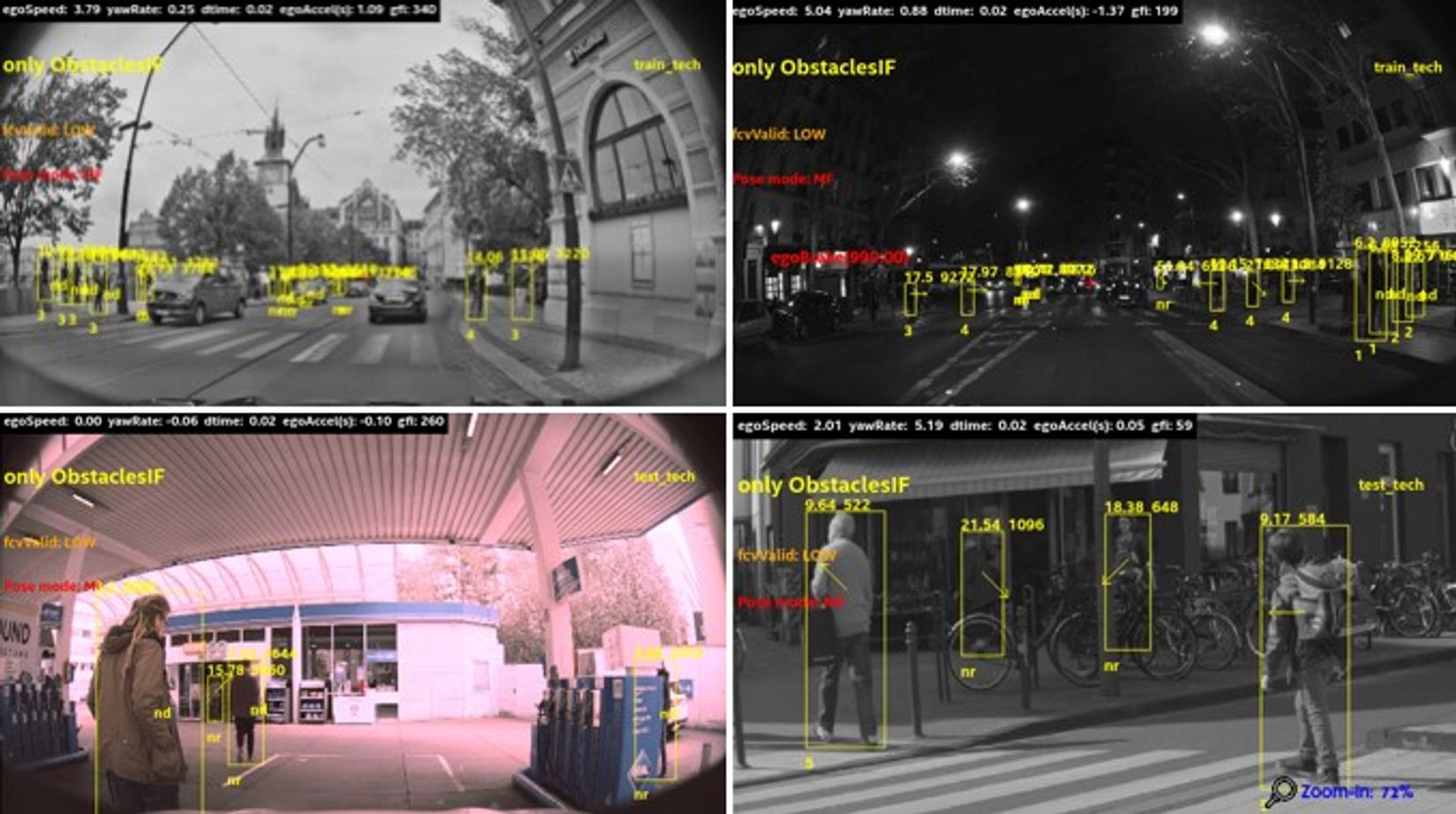Pedestrian Safety Month: Protection Begins with Detection
Discover how Mobileye’s industry-leading computer-vision technology safeguards the most vulnerable of road users.
You’re crossing the street when you see a vehicle headed towards you, and you hesitate: is the driver going to stop? Does the driver even see me?
This is the operative question. Because, as a pedestrian, you can seldom tell whether or not a driver sees you. His or her vision could be limited by any number of factors – and to see you, of course, the driver needs to be paying attention in the first place. And that, unfortunately, is not always the case.
Computer vision, on the other hand, doesn’t get distracted or lose focus. It doesn’t get drowsy or intoxicated. It’s always on, and always paying attention to the road and everything (and everyone) on it.
Here’s how our computer-vision technology works to protect pedestrians.
Detection for Protection
In order to protect pedestrians, you first have to be able to detect them. This is the fundamental principle behind the computer-vision driver-assistance technology we develop to safeguard the most vulnerable of road users.
Our technology enables an array of driver-assistance features designed to keep pedestrians safe from being hit by moving motor vehicles. These include passive features – such as Forward Collision Warning and Blind-Spot Monitoring systems – which alert the driver to the proximity of pedestrians (among other road users, obstacles, and hazards). And it includes active features – like Automatic Emergency Braking (AEB) – designed to intervene if an imminent collision with a pedestrian (or other obstacle) is detected.

Fortunately, Advanced Driver-Assistance Systems (ADAS) are becoming more commonplace in new cars, and many jurisdictions around the world are mandating them as standard equipment on new models. A significant number of vehicles on the road and on the market employ our technology to enable such features, and the capabilities of our technology are constantly advancing. And the more prolific and advanced these systems grow, the safer our roads become for pedestrians, cyclists, and other vulnerable road users.
The Insurance Institute for Highway Safety (IIHS) found that AEB can reduce the rate of pedestrian collisions by over a quarter. And it reports that 6,516 pedestrians were killed in motor vehicle crashes in the United States in 2020, with some 55,000 more injured. Had the vehicles involved in those collisions been equipped with AEB, some 1,700 lives might have been saved and approximately 14,000 injuries prevented in that one year in the United States alone. And that’s just one of the many ADAS features enabled by our solutions, in one of the many markets in which vehicles equipped with our technology are sold.
Safety Through Redundancy
To increase the accuracy of detection and enhance the safety of such vulnerable road users, Mobileye’s computer-vision ADAS technology employs not just one method of detection, but several operating in parallel – each processing the same camera feeds:
- Classic Pattern Recognition enables the system to automatically identify and classify objects and other road users.
- Full Image Detection does the same for larger objects in close proximity to the vehicle.
- The Segmentation method labels individual and groups of pixels to better identify smaller elements in the driving environment (such as pedestrians and cyclists).
- The Top-View Free Space method identifies other objects and road users as distinct from the road surface.
- Wheel Detection classifies other vehicles by identifying their wheels.
- Vidar employs cutting-edge deep learning to create a lidar-like 3D model of the driving environment for increased situational awareness.
On top of these, we implement specific algorithms dedicated to detecting baby strollers, wheelchairs, and open car doors – particularly important elements that vehicles are likely to encounter in their driving environment. Further algorithms identify and monitor the orientation, posture, and gestures of pedestrians to better recognize their situation and predict what they might do next.
By employing these varied methods and dedicated algorithms in parallel, we aim to significantly increase the probability of detection of pedestrians and other vulnerable road users.
Of course, technological solutions form just one part of the equation in the effort to reduce the incidence of pedestrian collisions. We’ve all witnessed distracted pedestrians stepping out into the street without looking, and we can hardly over-stress the importance of observing basic pedestrian safety tips – like sticking to sidewalks, crossing at designated crosswalks, observing signals, staying alert, and watching out for moving vehicles. But the next time you’re at the crosswalk, you can rest assured that if the car or truck approaching is one of the 125 million on the road equipped with our technology, the vehicle will see you... even if the driver doesn’t.
